|
BULB LOG 44 --- 1st November 2006
I thought I would just mention that this is log 44 of year 4; that makes it bulb log 200, let's celebrate!!
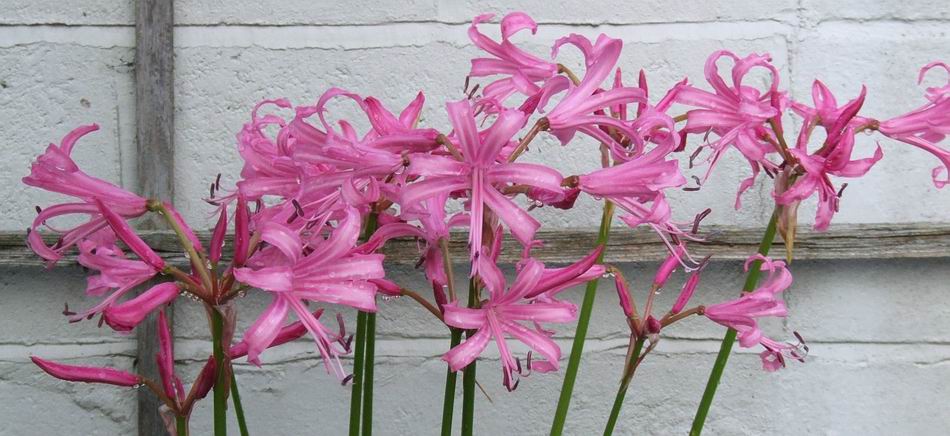
Nerine bowdenii
We only have a couple of small groups of Nerine bowdenii because of the space they take up but there are gardens close to us in Aberdeen that have hundreds if not thousands of them. It is always interesting to observe how certain plants are distributed in front gardens. One garden has a central path with rectangular lawns on each side, the lawns are bounded on all four sides by a border about 1 meter wide and every centimetre of these borders is crammed full of Nerine in full flower. As you move up and down the street you find many gardens with varying degrees of Nerine plantings so you can almost plot which neighbour was the first to receive a few bulbs and at the same time speculate why the garden only a few doors away has none. Did they not speak to that neighbour or do they just not like Nerine? Interestingly there is another plant that features in the same way spreading up and down this street and it is not a bulb but a very nice Celmisia. It is not just in this street that these plants appear but all ov
er Aberdeen - they obviously like our climate and soil conditions. If you are planting Nerine leave the nose of the bulb sticking out of the soil as it will not flower if planted at any depth.
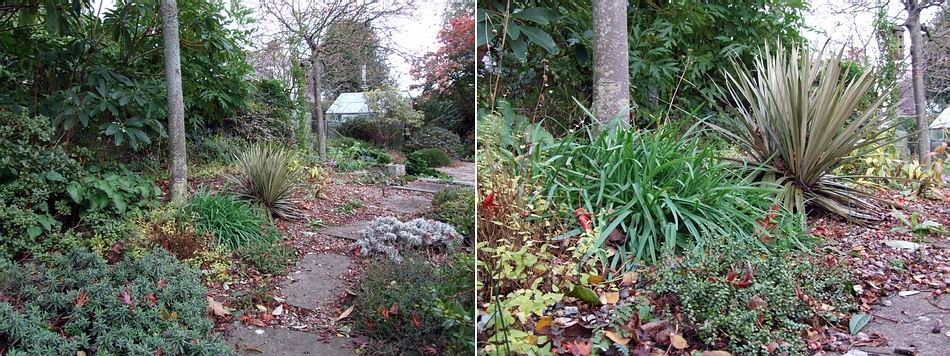
Autumn leaves and Ipheion
Talking of climate the autumn leaves are falling, or being blasted off the trees by the gale force winds we had last week, but also new autumn leaves are well established. The leaves of Ipheion 'Alberto Castillo' came through a month or so ago and will be a welcome feature until all through the winter and spring when the bulb will send up its large white flowers before setting seed and going dormant about July. The spiky leaved plant is not the Celmisia I was referring to above, it is Celmisia armstrongi and we raised it from NZAGS seed many years ago.
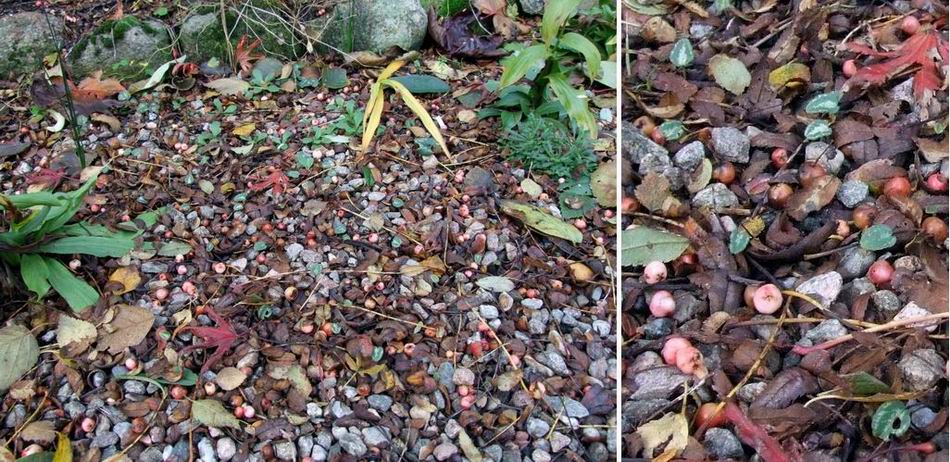
Cyclamen seedlings in gravel
The leaves will need to be cleared up from the gravel soon, not because I am fussy about being tidy (now stop that laughing), but look carefully. I have yet more of those cyclamen seeds I scattered around last year germinating in great profusion and I do not want them to be smothered by being covered in fallen leaves. It was a mixture of species that I scattered mostly Cyclamen, cilicium, coum and hederifolium and I will keep you posted with their progress to maturity. Back on the subject of tidy gardens one question I am asked a lot by general gardeners is the reason they have so few earth worms in their gardens, could it be that New Zealand flat worms have eaten them all? Well the first thing to clear up is, no, it is not all down to the flat worm eating them; blackbirds, hedgehogs and frogs eat far more worms than the flatworms do. The answer is often much simpler than that and my first question to them is when did you last dig in your garden to look for worms, many of them have to answer that they have n
ot dug the garden for a long time so how do they expect to see worms then. The other big reason in my opinion is down to people being over tidy in the garden, too quick to cut back herbaceous plants and pick up falling leaves in the autumn. All this dying organic material is then stuffed in a brown bin for collection by the local authority. What they are doing is mineralising their garden soil by gradually removing all the organic matter from it. Because it is this organic matter that the worms would feed on: they have moved off to find an untidy gardener like me before they starve. So leave your leaves lying, as long as they are not harming plants, and let your herbaceous plants die down naturally over the winter and then tidy what nature has not used up in the spring. So you see I am not an untidy gardener but an environmentally conscious one.
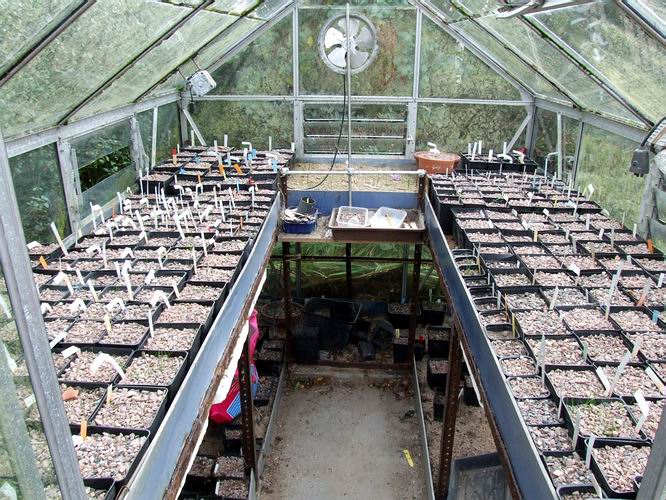
Frit house 30.10.06
As I complete my walk around the garden I look into the Frit house which has still no visible signs of growth but I must not let these pots get dry as all the frits will have now started to grow roots and their shoots will also be very slowly extending upwards.
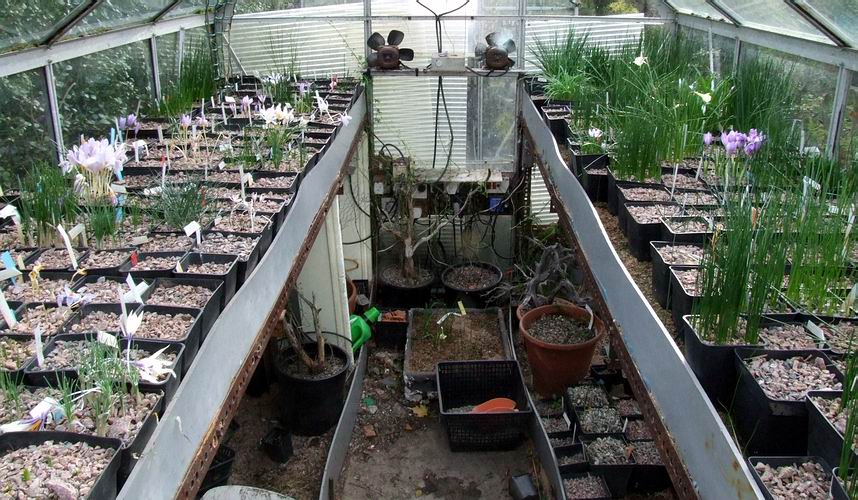
Bulb house 30.10.06
In contrast the bulb house is full of active growth needing plenty of attention. With so many nice fresh green leaves it is time I sprayed with a systemic insecticide to prevent an infestation, especially since the temperatures are still so high for this time of year. It is 17C in Aberdeen today; it is hard to believe that November started today, Wednesday. Night time frosts are predicted to start this week and I do hope for the plants' sake the temperatures drop soon to slow up the growth rate.
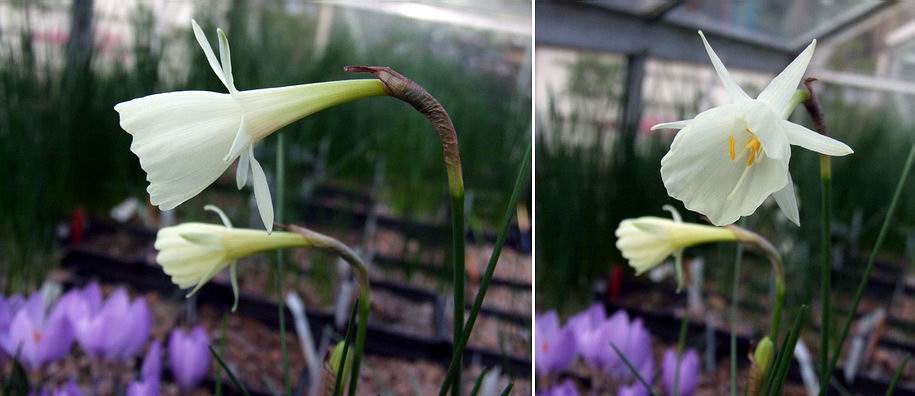
Narcissus cantabricus foliosus
Our first daffodil to flower opened last Wednesday, (25th October) Narcissus cantabricus foliosus is always among the earliest of the winter flowering species to open and in case you think it is much earlier than last year I have just checked back and it opened on almost exactly the same day for the last three years and in 2003 it did not open until mid November.
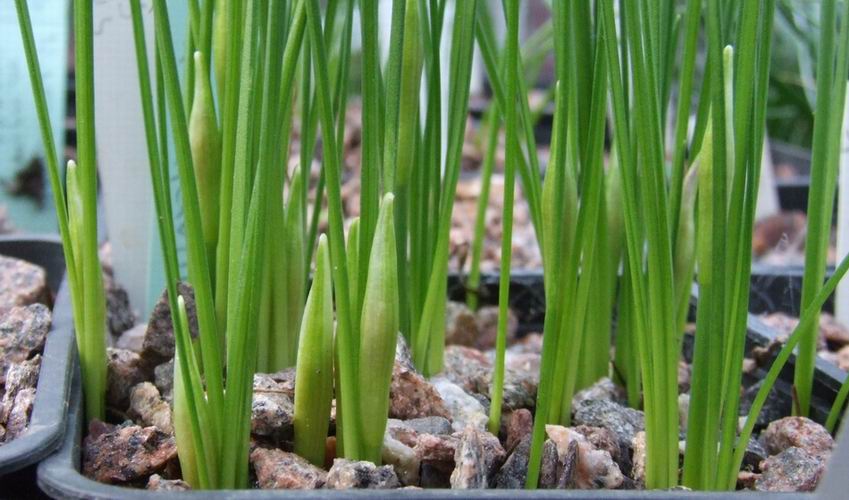
Narcissus buds
So many Narcissus now have buds coming through that we are going to experience a very floriferous period through the winter months. The warmer weather in the summer has certainly contributed to more flowerbuds forming in the Narcissus bulbs and the mild September makes them flower early.
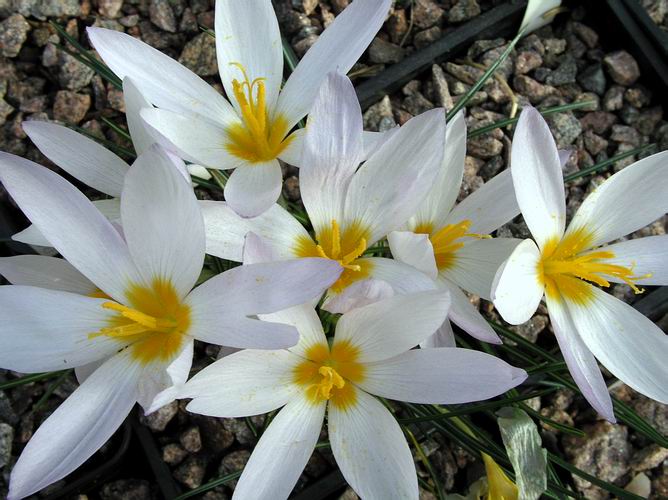
Crocus caspius
This is at least the second if not the third flowering from this pot of Crocus caspius the first flowers opened three weeks ago on the October 7th.
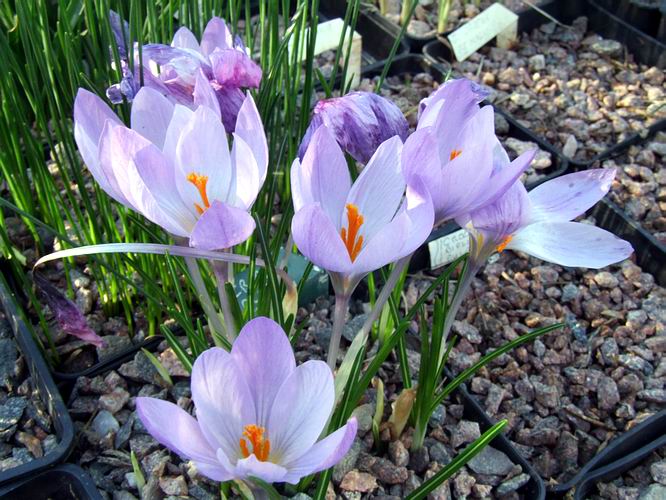
Crocus clusii
I still have this plant labelled Crocus clusii which was the name on the small packet of bulbs I got from an early bulb exchange but it should be Crocus serotinus ssp clusii. The flowers that are withering in the back are all spotted as a result of the week or more of very damp weather we have had while those in the foreground have opened perfectly in today's warm sunshine.
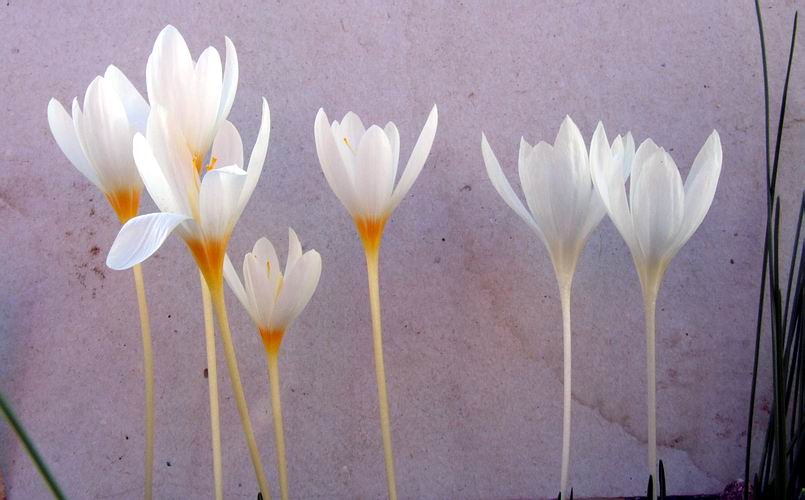
Crocus ochroleucus and albus
Growing side by side is Crocus ochroleucus and its pure white form, albus. Not only does it not have a yellow throat but the style and anthers are also white.
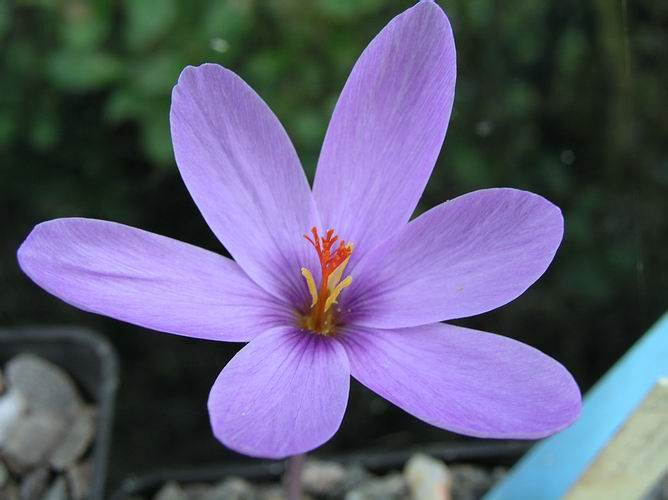
Crocus medius
I like the dramatic contrast between the colour of the petals and the crimson orange style of Crocus medius.
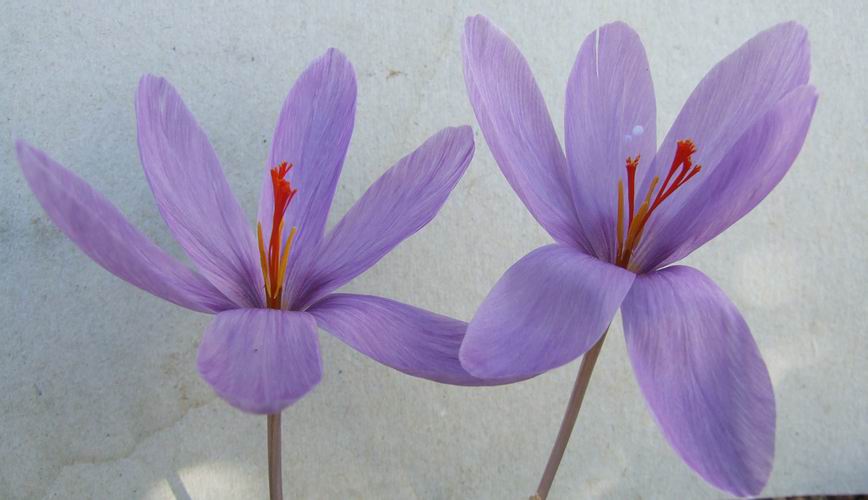
Crocus medius x2
I have heard it said the much Crocus medius is infected with a virus. You can see some signs of streaking in the petals of the flower on the left which could be symptoms of a virus on the other hand it could just be a light feathering a pattern that is common in varying degrees in many crocus. However the corms we have are growing well and show now other signs of being virused; if I were sure they were infected, I would dispose of them.
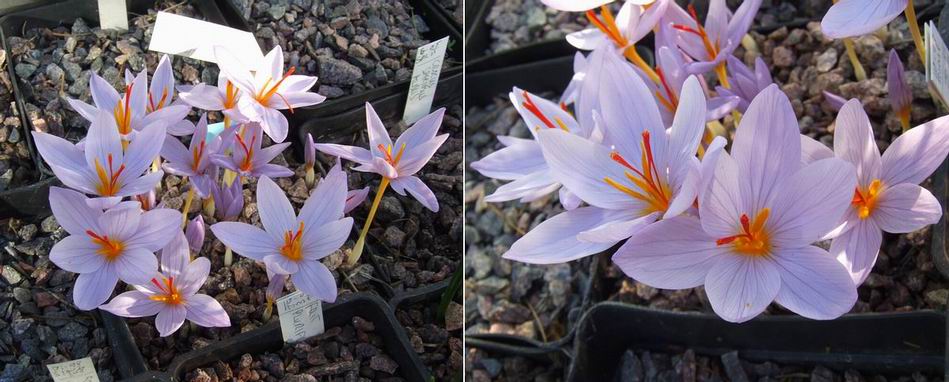
Crocus longiflorus x2
Yet another fantastic crocus with dramatic colour and shape combinations is Crocus longiflorus. Not difficult to grow, either in a pot or in the garden it rewards you with this lovely display which always lasts longer when protected from our wild autumn weather.
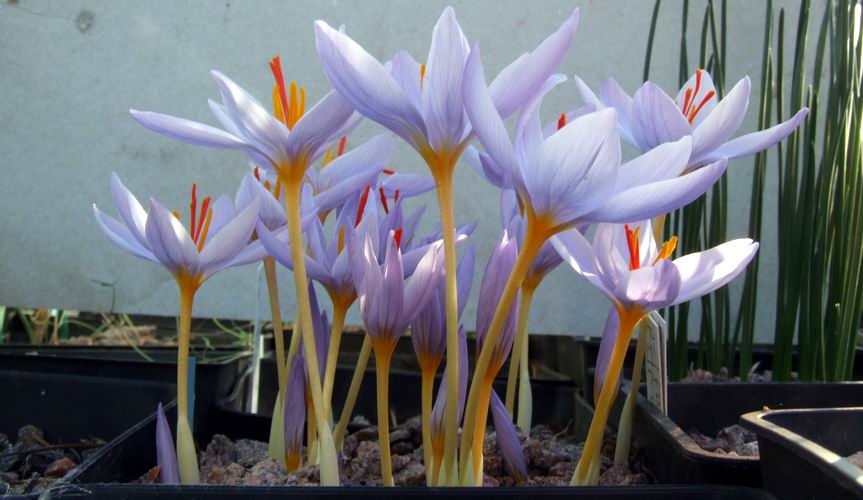
Crocus longiflorus yellow tubes
Also when it is grown in a pot which is raised up close to eye level you can appreciate the wonderful vision from the side view with the lovely deep golden yellow tube growing up from the gravel.
^ back to the top ^
|

